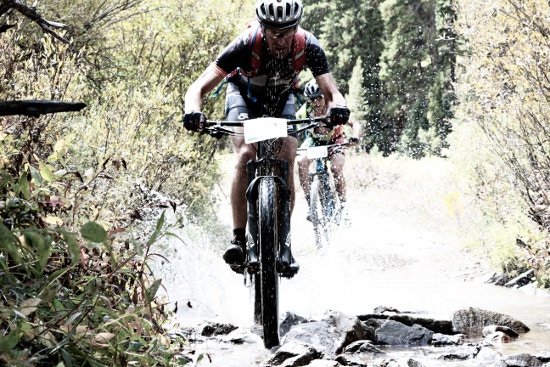Mountain biking is an adrenaline sport that could very easily make you addicted pretty fast. If you have just started or you’re planning to try out mountain biking, you should know that it’s different than regular road cycling.
To avoid unnecessary injuries and get the hang of it faster, here’s what you need to know.


Body position
The most important thing about proper mountain biking is the position of your body on the bike. The variable terrain, including rocks, sand, mud, and roots, represents the obstacles and fun at the same time. To avoid being thrown out of the bike, your body position plays an important role. There are two main body positions to be aware of:
1. Neutral position
It’s necessary to be in a neutral position when you’re riding non-technical sections of a trail, which will allow you to ride efficiently and comfortably. The position will also allow you to switch easily to the position for technical terrain when needed. The following is included in the neutral position:
- Evenly-weighted pedals
- Bend a bit in your knees and elbows
- Hold index fingers on the brake levels all the time
- Look in front of you some 15 to 29 ft. ahead
2. Ready position
Once the trail starts being rockier or steeper, you should switch to the ready position. It will prepare you mentally and physically for the technical sections (the obstacles). This position includes:
- Evenly-weighted pedals
- Bend deeply in your knees and elbows (like you’re making chicken wings while making a 90-degree bend)
- Sitting on the rear end of the seat, with hips shifted back
- Flat back, almost parallel to the ground
- Hold index fingers on the brake levels all the time
- Look in front of you some 15 to 29 ft. ahead
Adjusting seat position
If you position the seat properly, it could make it easier for you to get into proper body position for climbing and descending.
Climbing – you need a proper seat position for pedaling. When you put your foot on the bottom of the pedal stroke, there should be a slight bend in your leg (some 80-90% of full leg extension). This seat position will allow you to fully use your major leg muscles.
Descending – Drop the seat some 2 or 3 inches from the height set for climbing. It will lower your center of gravity, giving you more control while descending. You will probably have to try out different heights until you’ve found the best one.
Easy with the brakes
You may feel tempted from time to time to grab both brakes and pull them with all of your strength but the truth is – mountain bike brakes work fine with you using only one finger to modulate the speed. So, adjust the speed before the terrain gets bumpy and with sharp corners, then just maintain the speed while riding through that part of the trail. If you realize you’re going too fast while turning, don’t use the front (the left) brake. If you stop the front tire, it will send the tire into a slide, which would probably make you fall off. Hitting the right brake is more likely to help you stay in the seat.
When to hit the brake – when you’re approaching the turn, brake before you start turning and then let the momentum carry the bike through the turn. That way, you’ll be able to focus on the technique while turning and to exit the turn with speed.
Momentum is also helpful when cycling over obstacles. Beginners often slow down too much here, while controlled momentum can help you go over obstacles more easily and quickly. Also, choosing one of the quality full suspension mountain bikes will reduce the impact the obstacles make, making it easier for the brakes to work, too.
Keep your eyes fixed on where you’re headed
Looking directly into the rock that you don’t want to hit will actually make you run right into it. This is the matter of “target fixation” – your bike goes where your eyes go. So, you need to look past the obstacle to the path you want to follow. Keep your chin level to the ground and look as far down the path as possible. Your peripheral vision will help you avoid obstacles directly in front of you. Don’t forget to wear a trail-specific helmet, which will protect your head in case an obstacle causes you to fall off.
Shifting
It’s very important to know how to shift gears properly at the right moment. It will save your bike from tear and wear (especially the chain, rear cogs, and front cassette) and it will allow you to cycle more efficiently up and down.
Shift gears often – if you’re a beginner, you should practice frequent gear shifting. Doing it frequently will build muscle memory, meaning you’ll automatically shift into the right gear without thinking too much about it.
Shift gears early – never wait until you’ve already started climbing to shift gears. Shift gears before you hit the ascending terrain. It will enable you to keep a steady cycling rhythm and maximum power. You’ll also prevent complicated shifting while under a load that’s hard for the gears, which could lead to chain popping off. If you can’t find the right gear for specific terrain, choosing to spin in an easier gear is a better choice than pedaling in a hard gear.
Cross – chaining is another important rule – it happens when the chain is stretched awkwardly from the small chainring to the small cog or the big chainring to the big cog. It can cause the chain to pop off and shortens the lifespan of the chain.
Falling off properly
Falling off the bike is not a pleasant experience but it will happen eventually no matter how skillful you are. So, it’s better to know how to fall off in a way that causes you the least harm.
First, while falling off, try to keep your arms in. Your instinct may be to straighten up your hands ahead to brace your fall but it could lead to a broken collarbone or wrist.
Secondly, when you do fall, your pride will probably be the thing that got hurt the most. Don’t let it get to you; instead, check yourself for injuries, and then check the bike – the chain may have come off or the seat and handlebar may have twisted. Also, check the breaks and gears before you go on cycling. In case you need to do some repairs, to them immediately, and patch yourself up if needed.
Learn how to perform basic repairs
The rugged terrain that comes with mountain biking includes mechanical troubles more frequently than when you cycle on the pavement. Tubeless tire technology will help minimize the flats but they won’t eliminate them for good. This is why you need to learn some basics about repair on the terrain to be able to get out of the woods as soon as possible. Fixing a flat is a bare minimum you should learn. Other useful skills include replacing a bent, repairing a broken chain, and replacing cracked derailleur hanger. Assistant in a local shop or even a friend can show you how to do it.
Carry the right equipment
You should know that mountain bike rides often get longer than you have expected. Many times, you get lost, run into rugged terrain or you have a mechanical issue. In other words, you won’t have a convenience store close by so you need to go on the road well-prepared.
Pack more food and water than you think you’ll need because many times you can’t simply be picked up by a friend when you come across a problem that you can’t solve on your own. So, if you have to sit and wait for a long time, or haul your bike, it’s better if you’re not thirsty or hungry. Secondly, always carry the necessary tools, such as a spare tube or two, a pump, and a multi-tool. It’s more fun to go cycling when you know you have everything you need in case something breaks or goes wrong.
Common mistakes
As a newbie, you’ll probably tend to do some common beginner’s mistakes. Learn about them now so that you don’t do them when you finally sit on your mountain bike.
1. Sitting down too much
Sure, it’s cool to be sitting down on a comfortable seat but when the terrain gets bumpy, you will prevent your legs from doing what they do best – absorbing the shock. Your legs absorb the bumps on the trail and allow you to separate your body from your bike. By separating your body, it will be easier for you to shift your weight and lean, which allows you to go faster and to be more confident. Pay attention to professional downhill rides – the bikers hardly ever sit down.
2. Being too tense
Many newbies experience sore hands, arms, and shoulders because they are too tense while cycling. The phrase mountain bikers use for this is the “death grip”. Sometimes it feels more secure to grip the bars very tightly but it only makes your muscles very tense and making it more difficult to move dynamically. Of course, you shouldn’t hold too lightly but try to loosen your grip a bit. It will prevent soreness in the upper body and increase your control over the bike and techniques.
3. Toes on the end of the pedals
It’s important to choose the pedals that work for you and that your feet are in the right position. Whether you opt for flats or clipped pedals, the position of your feet on them will make a big difference when it comes to your cycling ability. Maybe you think you should balance on your toes or put the ball of your foot over the pedal axle but that would just put additional strain on your leg muscles.
You should move your forefoot forward and place the ball of your foot in front of the pedal axle (but not too much). This will help you use the right muscles that bring you a more stable position.
Final comment
Like any other sport, mountain biking requires persistence and regular training to see big improvements in your skills and strength. However, avoiding rookie mistakes will speed up the whole process and make this activity even more pleasurable.









